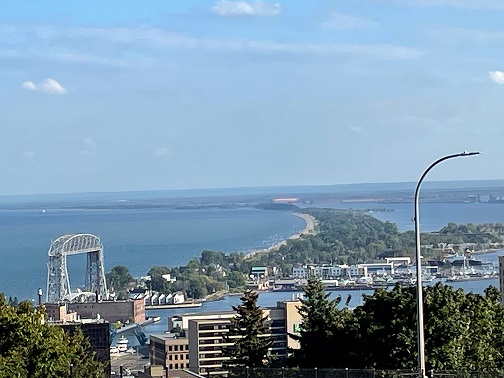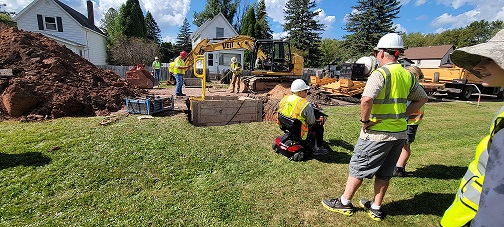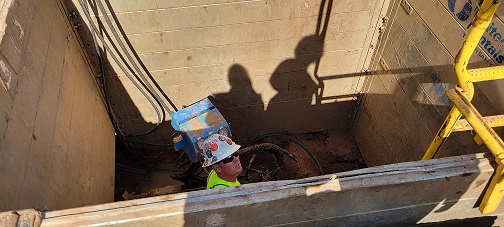Drinking Water Protection
- Drinking Water Protection Home
- About Us
- A-Z Index of Contaminants in Water
- Community Public Water Supply
- Drinking Water Grants and Loans
- Drinking Water Institute
- Drinking Water in Schools and Child Cares
- Drinking Water Revolving Fund
- Laws and Rules
- Noncommunity Public Water Supply
- Source Water Protection
- Water Operator and Certification Training
- Drinking Water Protection Contacts
Related Topics
- Annual Reports
- Drinking Water Risk Communication Toolkit
- Drinking Water Protection External Resources
- Fact Sheets
- Forms
- Invisible Heroes Videos: Minnesota's Drinking Water Providers
- Noncom Notes Newsletter
- Sample Collection Procedures (videos, pictures, written instructions)
- Waterline Newsletter
Related Sites
- 10 States Standards
- Clean Water Fund
- Health Risk Assessment – Guidance Values and Standards for Water
- Minnesota Well Index
- Water and Health
- Wells and Borings
Environmental Health Division
Duluth Gets Early Funding for Lead Service Line Replacements
From the Winter 2024-2025 Waterline
Quarterly Newsletter of the Minnesota Department of Health Public Water Supply Unit, Waterline
A complete list of feature stories can be found on the Waterline webpage.

Duluth is meeting requirements for the safety of drinking water by replacing lead service lines.
A multi-year, multi-billion-dollar push to remove lead service lines is underway in states across America and cities throughout Minnesota, and the first funds are flowing into Duluth for such work. Cities and counties have been coordinating the digging to replace the service lines with necessary street repairs to minimize the disruption.
Chad Kolstad, head of the Infrastructure Unit at the Minnesota Department of Health (MDH), noted that these efforts are “prioritizing public health” and explained that grants and loans are available to water systems for lead service line replacements through the Drinking Water Revolving Fund, which receives both state and federal Infrastructure Investment and Jobs Act funds.
The state money came when Governor Tim Walz signed legislation last year to provide $240 million for a grant program for replacing lead service lines. MDH estimates there are about 100,000 water service lines in the state that have the potential to leach lead into the water flowing through them. In children, lead can also slow development or cause learning, behavior, and hearing problems.
Service lines normally are divided in ownership between the city and property owner. The private parts are being financed through grants, the public portions through grants and loans.
In September 2024, a number of MDH employees – in town for the annual conference of the Minnesota Section of American Water Works Association – visited the Gary/New Duluth neighborhood to see a couple of service lines being replaced.
This area, along the St. Louis River and in the flattest and lowest part of Duluth, had once been small municipalities before being annexed by Duluth. It is somewhat distant from the main area, and Jon Maruska, a senior engineering specialist for the city, explained why he invited MDH staff to this location. "We met here today because we wanted you to drive all across [town] and let you imagine all the lead services that you passed on the way out here.”
Maruska said Duluth has approximately 31,000 water services. In the inventory the city performed, it determined that 6,800 were lead services with another 5,500 of unknown composition. “We expect roughly half of those [unknown services], if not more than half of them to be lead, when we do the full investigation," he said. “So we expect a total of 10,000 plus. This summer we’re on track to replace 670.”
At this time, the city was reaching its 500th replacement, which “leaves about 170, so we still have a busy fall ahead.” Maruska said they had three neighborhood replacement projects going on this year. “We’re targeting about 200 [replacements] per project, thinking that’s the amount one local contractor can complete in one season.”
On this day, two lead service lines were being replaced on 103rd Avenue West to the north of W. Heard Street. The general contractor, Veit & Company, Inc. of Rogers, Minnesota, was using directional drilling for the replacements. “I think contractors pretty quickly realized that directional drilling is the way to do these,” Maruska explained, “saving as much of the street as possible, saving all the restoration on the private property. In our early plans, we actually spelled out to use trenchless methods.
“We’re moving away from that and just saying, put the pipe in the ground and use what method works, and they’re going to use directional drilling when it works.” It doesn’t always work. While the Gary/New Duluth area is heavy in clay, parts of Duluth have a lot of rock, which leads to open cuts rather than directional drilling.
In addition to water utility work being done in neighborhood-wide projects, Duluth has a program for high-priority replacements, factors being a leaking service line or other utility work, such as sewers, being done. “It just makes sense to have them do the lead service line at the same time,” said Maruska.
How many years the entire project will encompass will depend on the exact total of lead service lines and continued funding availability. Duluth plans to scale up replacements in 2025 with a goal of replacing all lead services in a decade.

Observed by interested parties from the Minnesota Department of Health, Duluth workers replaced two lead service lines on 103rd Avenue North off Heard Avenue North on September 16.

Go to > top.